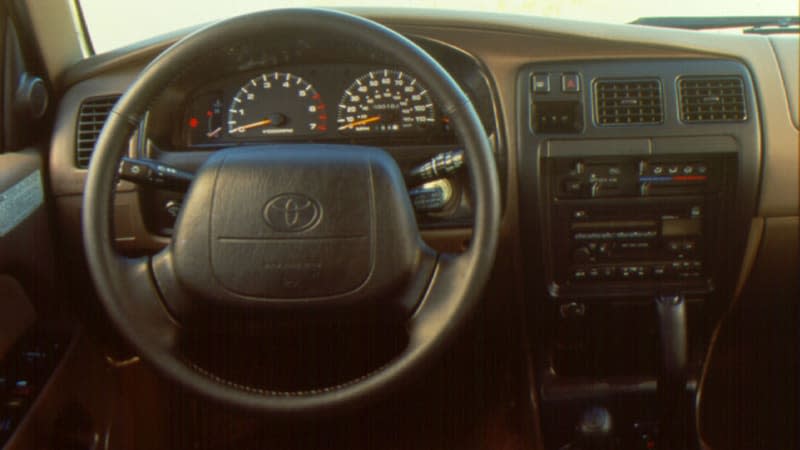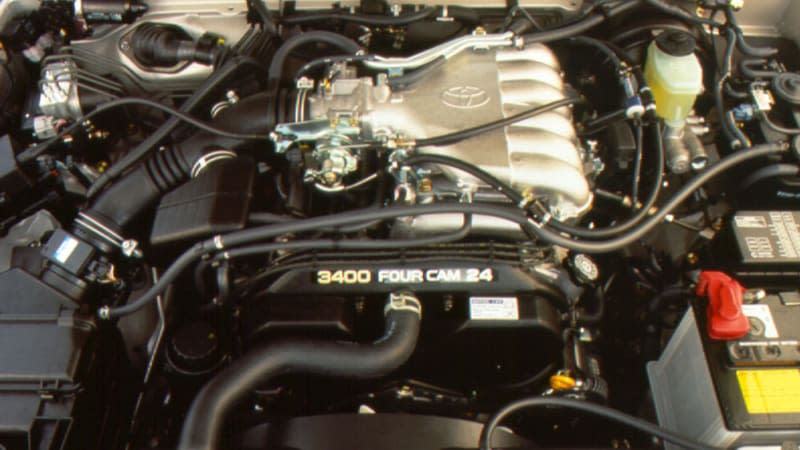Toyota 4Runner third-generation through the years: A history lesson on the 1996-2002 models

The Toyota 4Runner has been on sale in the U.S. since the mid-1980s and will enter its sixth generation in 2024 as a 2025 model-year SUV. We're about to see the brand-new 2025 4Runner (stay tuned for that later today), so we thought now would be a great time to look back at one of the previous generations that helped establish the 4Runner name in the United States.
Earlier 4Runner variants still hold a special place in enthusiasts’ hearts, especially for off-roading, as their rugged construction, reliability, and classic styling make for a hard-to-beat combo. The first 4Runner debuted in 1984 (the same year as the SUV segment-defining Jeep Cherokee); the second-gen hit the scene for the 1990 model year. The third-generation 4Runner that we're focusing on today debuted in 1996, bringing numerous cosmetic and mechanical updates to the SUV, defining the model as one of “the ones to have” out of the 4Runner’s long and storied history.
Toyota bumped the 4Runner’s overall size for the third generation, making it longer overall and giving it a longer wheelbase. The changes brought more interior space and better cargo capacity, and the new suspension setup gave it a smoother ride and stability off-road. Third-gen 4Runners were also the first to get an electronic-locking rear differential, though Toyota had offered it for years in the Land Cruiser by that time.
The 4Runner got a mid-cycle refresh in 1999 that included a new front-end design with a revised bumper and headlights, as well as running boards and other exterior touches for some trims. More substantive changes came inside, where Toyota reconfigured the control stack, moving most to the center of the dash. The automaker also introduced a new transfer case for four-wheel drive models that enabled all-wheel drive in some situations.
With the 2025 4Runner right around the corner, let's take a closer look at the desirable third-generation version.
Third-generation 4Runner powertrains
Toyota offered diesel options in Japan, but Americans got a choice between a 2.7-liter four-cylinder and a 3.4-liter V6. The four-cylinder, codenamed 3RZ-FE, made 150 horsepower and 177 pound-feet of torque when new. The 5VZ-FE V6 produced 183 horsepower and 217 pound-feet of torque, slightly less than the same engine available in the Tacoma pickup at the time. Toyota offered a five-speed manual or four-speed automatic, though the manual option left the lineup after the 2000 model year. Toyota later offered a supercharger kit for the 3.4-liter V6 through its factory TRD accessory arm.
Why is the third-generation 4Runner special?
Earlier 4Runner models attracted the off-road crowd, but it hadn’t broken into the mainstream as a daily driver or family vehicle. The third-gen SUV marked one of the earliest “crossover” events for the 4Runner, as everyone from soccer moms to executives looking for a large, cushy vehicle gravitated toward its friendly styling and generous interior space. That shift meant that many 4Runners were driven into the ground on family-hauling duty, making them more difficult to find in decent condition today. The off-road crowd snapped up those that made it out of kid transport relatively unscathed because of their capability and updated styling.


Today, the third-gen 4Runner is somewhat readily available on the used market, but the combination of high miles, a frame that tends to rust if you look at it the wrong way, and extensive off-road modifications make finding a good one a rarity. There is no shortage of 1996-2002 4Runners available, but a quick scan through the Autoblog classified listings shows only a few with reasonable mileage numbers, and they’re mostly inflated in price. Unmodified examples with less than 100,000 miles are commanding prices in the mid-to-upper $20,000 range, with some creeping toward $30,000. Accepting higher miles will lower that starting figure quite a bit.
Alternatives to the third-generation Toyota 4Runner
While body-on-frame Japanese off-roaders are a dying breed today, there were quite a few solid alternatives to the third-gen 4Runner in its day. Honda and Isuzu paired up to produce the Passport and Rodeo, respectively, which offered worthy off-road capabilities. The SUVs also had attractive 90s styling and comfortable interiors, but some second-generation models suffered massive frame rust issues that led to a recall in 2010, with buybacks initiated if the problems were bad enough.

 Yahoo Autos
Yahoo Autos 
